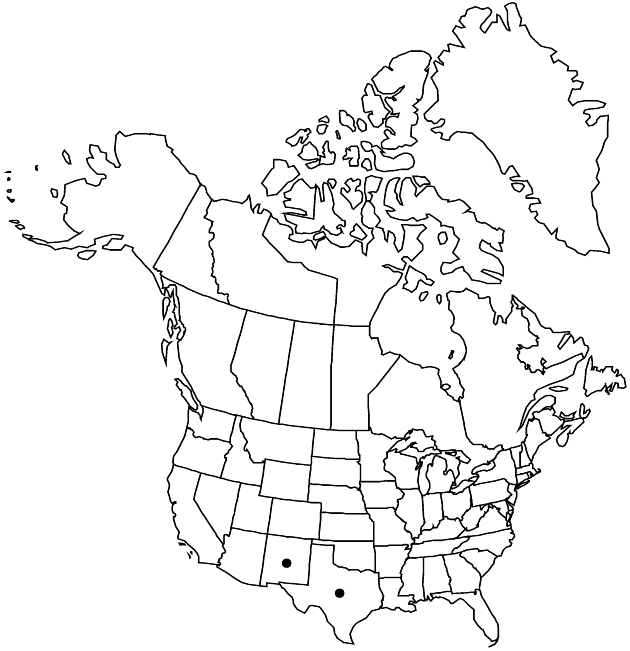Thymophylla setifolia var. greggii
Sida 21: 287. 2004.
Perennials, ashy white, to 15 cm, tomentose. Stems spreading (mat-forming). Leaves opposite; blades (at least proximal) lobed (from near bases), 6–12 mm overall, lobes 3–7, stiff, filiform (distal blades often acerose). Peduncles 30–40 mm, glabrous or glabrate. Calyculi of 1–3 subulate bractlets, lengths less than 1/2 phyllaries. Involucres obconic to campanulate, 3.5–4 mm. Phyllaries 9–15, margins of outer free less than 1/3 their lengths, abaxially glabrous. Ray florets 7–10; corollas bright yellow, laminae 2–3 × 0.8–1.2 mm. Disc florets 20–40; corollas dull yellow, 2–2.5 mm. Cypselae 1.5–2.2 mm; pappi coroniform (of connate scales) 0.3–0.5 mm.
Phenology: Flowering summer.
Habitat: Rocky, calcareous outcrops and derived soils
Elevation: 1200–1500+ m
Distribution

N.Mex., Tex., Mexico (Chihuahua, Coahuila, Nuevo León).
Discussion
Thymophylla greggii var. greggii resulted from publication of T. greggii var. radiata A. Gray. Dyssodia setifolia var. radiata (A. Gray) Strother is illegitimate.
Selected References
None.